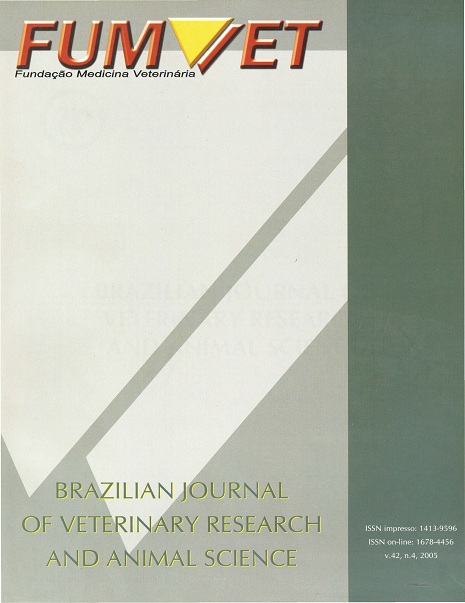High resolution electrocardiography avaliation in clinically healthy dogs
DOI:
https://doi.org/10.11606/issn.1678-4456.bjvras.2005.26421Keywords:
High resolution electrocardiography, Late potentials, DogsAbstract
The aim of this study was to describe the technique and results of high resolution electrocardiography (ECGAR) in clinically healthy dogs. During this research, 32 adult crossed-breed, dogs from both sexes were used, which were divided in four groups accordingly to their mean body weight. The animals were submitted to high resolution electrocardiography in time domain. It was verified that the duration of QRS complex was smaller in the group of dogs with lower body weight when compared to the group of animals weighing over 21 kilograms. Moreover, the duration of the low amplitude signals of the last 40 ms of the QRS complex (LAS 40) did not show significant differences among groups. Also no significant difference was seen among groups in relation to the mean squared root of the squared voltage of the last 40 ms of the QRS complex (RMS 40). These results, once tabled, could contribute for standardization of the reference values for canine ECGAR. Furthermore, these values could serve as foundation for other researches with dogs in risk of development of sustained ventricular arrhythmias and sudden death, through the detection of the so called late potentials.Downloads
Downloads
Published
2005-08-01
Issue
Section
UNDEFINIED
License
The journal content is authorized under the Creative Commons BY-NC-SA license (summary of the license: https://
How to Cite
1.
Ferreira WL, Dias FGG, Camacho AA. High resolution electrocardiography avaliation in clinically healthy dogs. Braz. J. Vet. Res. Anim. Sci. [Internet]. 2005 Aug. 1 [cited 2025 Apr. 6];42(4):271-5. Available from: https://periodicos.usp.br/bjvras/article/view/26421





